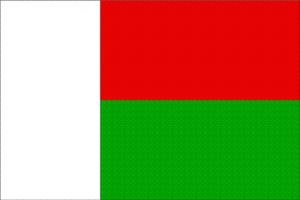Language/Plateau-malagasy/Grammar/Comparative-and-Superlative-Adjectives
| ◀️ Descriptive Adjectives — Previous Lesson | Next Lesson — Adverbs and Their Usage ▶️ |
Plateau Malagasy Grammar → Comparative and Superlative Adjectives
========================================================[edit | edit source]
Introduction
Welcome to the lesson on comparative and superlative adjectives in Plateau Malagasy! In this lesson, we will explore how to form and use comparative and superlative adjectives in the context of the Plateau Malagasy language. Understanding comparative and superlative adjectives is essential for expressing comparisons and degrees of quality in Plateau Malagasy. By the end of this lesson, you will have a clear understanding of how to use comparative and superlative adjectives correctly and confidently.
Structure of the Lesson
1. Introduction 2. Formation of Comparative Adjectives 3. Usage of Comparative Adjectives 4. Formation of Superlative Adjectives 5. Usage of Superlative Adjectives 6. Cultural Insights and Interesting Facts 7. Exercises 8. Conclusion
Formation of Comparative Adjectives
Comparative adjectives are used to compare two or more things in terms of quality or quantity. In Plateau Malagasy, comparative adjectives are formed by adding the suffix "-a" or "-y" to the base adjective. Let's look at some examples:
| Plateau Malagasy | Pronunciation | English |
|---|---|---|
| Maitso | [maitsʊ] | white |
| Maitsoa | [maitsʊa] | whiter |
| Maitsoy | [maitsʊj] | whiter |
In the examples above, the base adjective "maitso" (white) is transformed into "maitsoa" and "maitsoy" to express the comparative form.
Usage of Comparative Adjectives
Comparative adjectives are used to compare two or more things. In Plateau Malagasy, when comparing two things, the comparative adjective is followed by the word "no" (meaning "than") and the thing being compared. Let's see some examples:
1. Ny volam-panjakana no maitsoa noho ny rano.
(The national flag is whiter than the sky.)
2. Ilay rano no maitsoy noho ny volam-panjakana.
(The sky is whiter than the national flag.)
In the first example, we use the comparative adjective "maitsoa" to compare the whiteness of the national flag and the sky. In the second example, we use "maitsoy" to compare the whiteness of the sky and the national flag.
Formation of Superlative Adjectives
Superlative adjectives are used to express the highest degree of quality or quantity. In Plateau Malagasy, superlative adjectives are formed by adding the suffix "-an'ny" or "-in'ny" to the base adjective. Let's look at some examples:
| Plateau Malagasy | Pronunciation | English |
|---|---|---|
| Maitso | [maitsʊ] | white |
| Maitsoan'ny | [maitsʊanʲnʲ] | whitest |
| Maitsoin'ny | [maitsʊinʲnʲ] | whitest |
In the examples above, the base adjective "maitso" (white) is transformed into "maitsoan'ny" and "maitsoin'ny" to express the superlative form.
Usage of Superlative Adjectives
Superlative adjectives are used to express the highest degree of quality or quantity. In Plateau Malagasy, the superlative adjective is followed by the word "atra" (meaning "among") and the group of things being compared. Let's see some examples:
1. Ny volam-panjakana no maitsoan'ny amin'ny fomba rehetra.
(The national flag is the whitest among all.)
2. Ny rano no maitsoin'ny amin'ny volam-panjakana.
(The sky is the whitest among the national flag.)
In the first example, we use the superlative adjective "maitsoan'ny" to express that the national flag is the whitest among all things. In the second example, we use "maitsoin'ny" to express that the sky is the whitest among the national flag.
Cultural Insights and Interesting Facts
In Plateau Malagasy culture, the use of comparative and superlative adjectives goes beyond just describing the quality of things. It is often used to express respect or admiration for someone or something. For example, if you want to express that someone is the most beautiful person you have ever seen, you can use the superlative form of the adjective "maitso" (beautiful) as follows:
"Tsara indrindra aho ny hahita azy." (I am very lucky to see him/her.)
This expression not only conveys the admiration for the person's beauty but also shows the speaker's appreciation for the opportunity to witness such beauty.
Exercises
Now it's time to practice what you have learned! Complete the following exercises to reinforce your understanding of comparative and superlative adjectives in Plateau Malagasy.
Exercise 1: Translate the following sentences into Plateau Malagasy using the comparative form of the given adjectives.
1. The car is faster than the bicycle. 2. The cat is smaller than the dog. 3. The book is thicker than the magazine.
Exercise 2: Translate the following sentences into Plateau Malagasy using the superlative form of the given adjectives.
1. This is the most delicious cake I have ever tasted. 2. He is the smartest student in the class. 3. The movie was the scariest I have ever seen.
Solutions: Exercise 1: 1. Ny fiaran'ny fahavaratra dia maitsoa noho ny feopy. 2. Ny saka dia kely noho ny alika. 3. Ny boky dia maitsoa noho ny gazety.
Exercise 2: 1. Izao no torta mafy indrindra izay nampifandray ahy. 2. Izy no mpianatra mahay indrindra ao amin'ny kilasy. 3. Ny filmana no mafy indrindra izay nampitahaina tamin'ny teny.
Conclusion
Congratulations! You have successfully learned how to use comparative and superlative adjectives in Plateau Malagasy. These language skills will allow you to express comparisons and degrees of quality more accurately and effectively. Keep practicing and exploring the rich world of the Plateau Malagasy language. Veloma! (Goodbye!)
Other Lessons[edit | edit source]
- 0 to A1 Course
- Regular Verbs
- Pronouns and Their Usage
- Give your Opinion
- Alphabet and Pronunciation
- Irregular Verbs
- How to Use Be
- Adjectives
- Gender
- Plurals
Template:Plateau-malagasy-Page-Bottom
| ◀️ Descriptive Adjectives — Previous Lesson | Next Lesson — Adverbs and Their Usage ▶️ |

